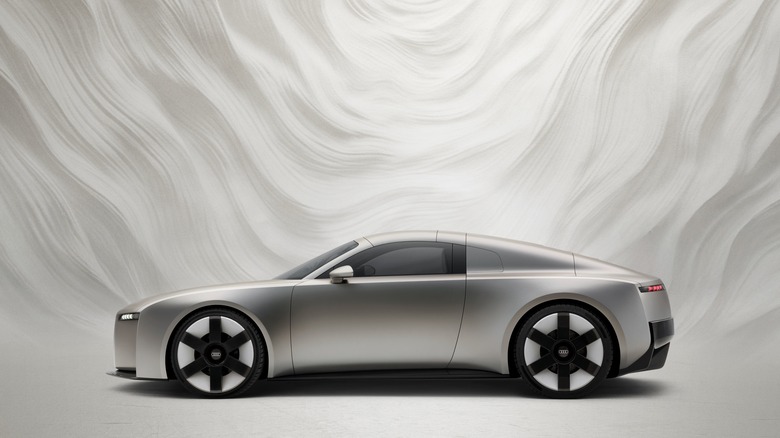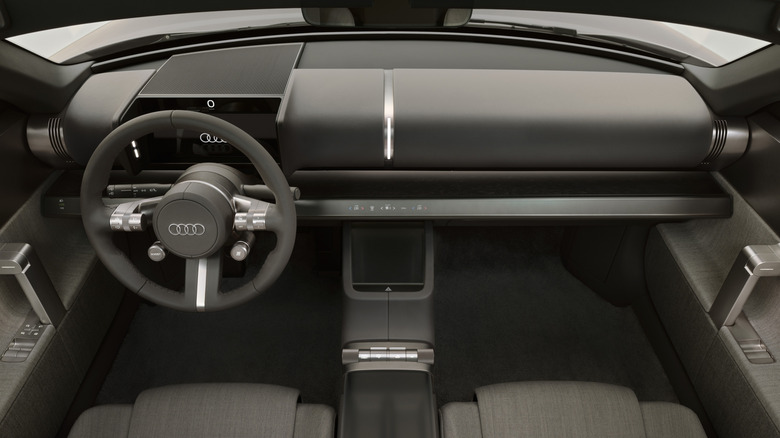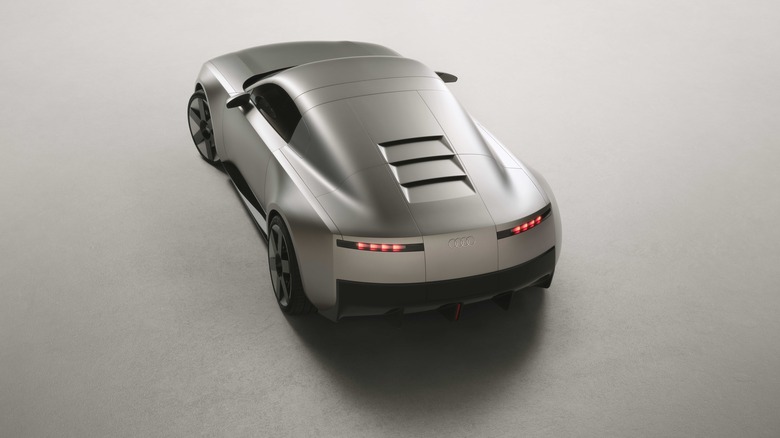Audi's New Concept Car Is A Sleek Peak Into The Company's Future
"Radical simplicity and technical precision." That's what Audi claims its all-new concept car is embodying, and looking over the car's details, it's hard to argue against the fact that the German giant has nailed the brief. We're talking about the Concept C — a striking concept that Audi has recently revealed, and if we're to believe that this concept is foreshadowing what we can expect from Audi's production models in the future, then it's clear that some big changes are on the horizon.
See, that's exactly what a concept car should do. Ever since the first concept car –- the Buick Y-Job of 1938 — concept cars have been used by automakers to show off their technical and styling capabilities. Cars like these are typically unveiled at big shows, and this way, automakers can gauge the reactions of attendees, see what they like, what they dislike, and then use that information to make judgement calls about what aspects of the concept they can build upon for future production models.
Looking at the Concept C, there is plenty to like. Audi claims that the minimalist lines have been influenced from the flowing Auto Union models of the 1930s, and we don't think this is just marketing talk either -– it's easy to see the connection. Whereas current Audi models are quite aggressive and busy in the design department, the Concept C is remarkably simple. It's designed as a two-seater sports car, with a silhouette not too dissimilar from that of the original and iconic Audi TT. While the design hints at a possible new and understated direction for Audi models, the all-electric powertrain and two-seat configuration hints that a possible replacement for the recently discontinued TT could be on the horizon.
Here's what we know, and what we don't
Sadly, Audi is keeping some cards close to its chest, and one of those cards holds all the exciting powertrain details. So, apart from the fact that it's electrified, we really don't know much about what the Concept C has to offer in terms of motivation. We know plenty about the interior though, and that's quite an exciting space — and worlds away from the four-ringed interiors we see today.
Thankfully, the Concept C sees a welcome return to physical buttons, and not cheap plastic ones either, but physical, aluminum switchgear –- hopefully a feature that can creep into production models in the coming years. Again, this is a feature which also harkens back to that original TT, which boasted aluminum details throughout the cabin, in addition to sleek, geometric shapes — another highlight of the Concept C's cabin. Haptic buttons are found on the steering wheel, which is a shame, but we live in hope that these too could be replaced for physical items by the time production comes around -– if it ever does. The seats and door cards are coated in wool, not leather. Not only an environmentally positive choice, but smart too, as the seat cooling properties and speakers can work through the open weave, negating the need for additional cutouts which would ruin the simplistic design.
Inside and out, titanium is the color of choice. It's not exactly exciting, but it is refreshing and it works well for the Concept C's simple lines. How many of these details will shape the company's future are unknown, but if we look back through Audi's history of concepts, it's clear to see that Audi likes to take elements from concepts and work them into production models where possible.
Audi likes to incorporate concept details into production models
One of the more famous instances of Audi actually using its concept model as a basis for a fully fledged production car stems from the 2003 Audi Le Mans Quattro concept. This was a low-slung concept car that looked like no Audi before it, sporting a boosted V10 powerplant, all-wheel drive, space for two and a six-speed manual transmission with automated shifting and clutch. If that sounds familiar, that's because it's essentially a first-generation Audi R8 — the production model barely deviated at all from the initial concept.
The same could be said about the 1995 Audi TT concept car, which again, is hardly distinguishable at all from the production model. In fact, park it out on the street, and we'd bet that hardly anyone would bat an eyelid at it, given how much it looks like any other first-gen TT. There aren't many concept cars you can say that about, and that should speak volumes about how much tech and design Audi likes to carry over from its concept models. The 2003 Audi Pikes Peak concept is another notable example, eventually arriving in showrooms as the Q7 some years later.
With any luck, Audi carries on this trend, and we shall see the Concept C arrive as a production model in just a few short years, as a simple, back-to-basics replacement for the TT – albeit now with an electrified powertrain. While the sharp and aggressive lines, shouty grilles, and busy interiors of current Audi models are exactly bad, there is something very appealing about this new direction Audi looks to be headed in.


